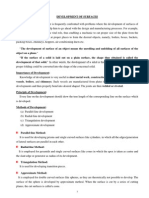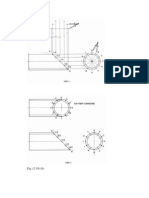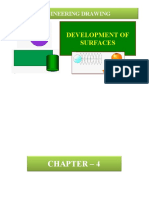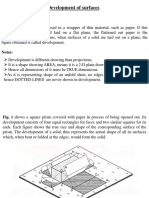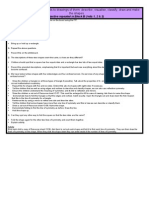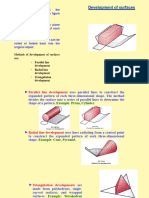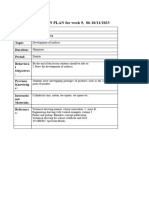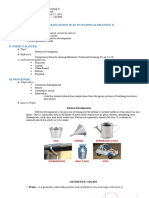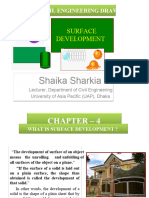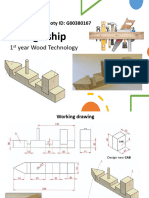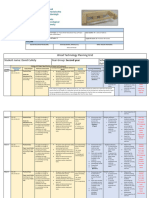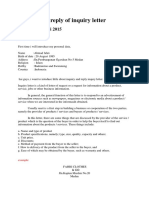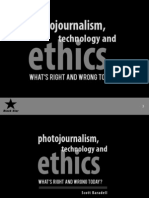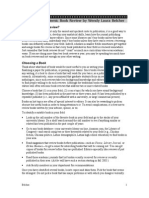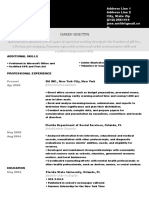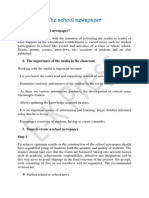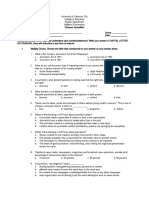0% found this document useful (0 votes)
101 views36 pagesDevelopoments 1 Powerpoint
The document provides instructions for drawing surface developments of 3D objects. It begins by explaining that a development is a 2D representation of a 3D shape that can be folded into a 3D object. It then gives examples of drawing developments for prisms, cylinders, and truncated prisms. The document includes step-by-step instructions and examples for drawing elevations, plans, and the complete developments. It emphasizes using dimensions from the elevations and plans to construct accurate developments. Several practice exercises are provided for the student to draw developments of objects like boxes, bins, and cylindrical containers.
Uploaded by
api-602237392Copyright
© © All Rights Reserved
We take content rights seriously. If you suspect this is your content, claim it here.
Available Formats
Download as PDF, TXT or read online on Scribd
0% found this document useful (0 votes)
101 views36 pagesDevelopoments 1 Powerpoint
The document provides instructions for drawing surface developments of 3D objects. It begins by explaining that a development is a 2D representation of a 3D shape that can be folded into a 3D object. It then gives examples of drawing developments for prisms, cylinders, and truncated prisms. The document includes step-by-step instructions and examples for drawing elevations, plans, and the complete developments. It emphasizes using dimensions from the elevations and plans to construct accurate developments. Several practice exercises are provided for the student to draw developments of objects like boxes, bins, and cylindrical containers.
Uploaded by
api-602237392Copyright
© © All Rights Reserved
We take content rights seriously. If you suspect this is your content, claim it here.
Available Formats
Download as PDF, TXT or read online on Scribd
/ 36







